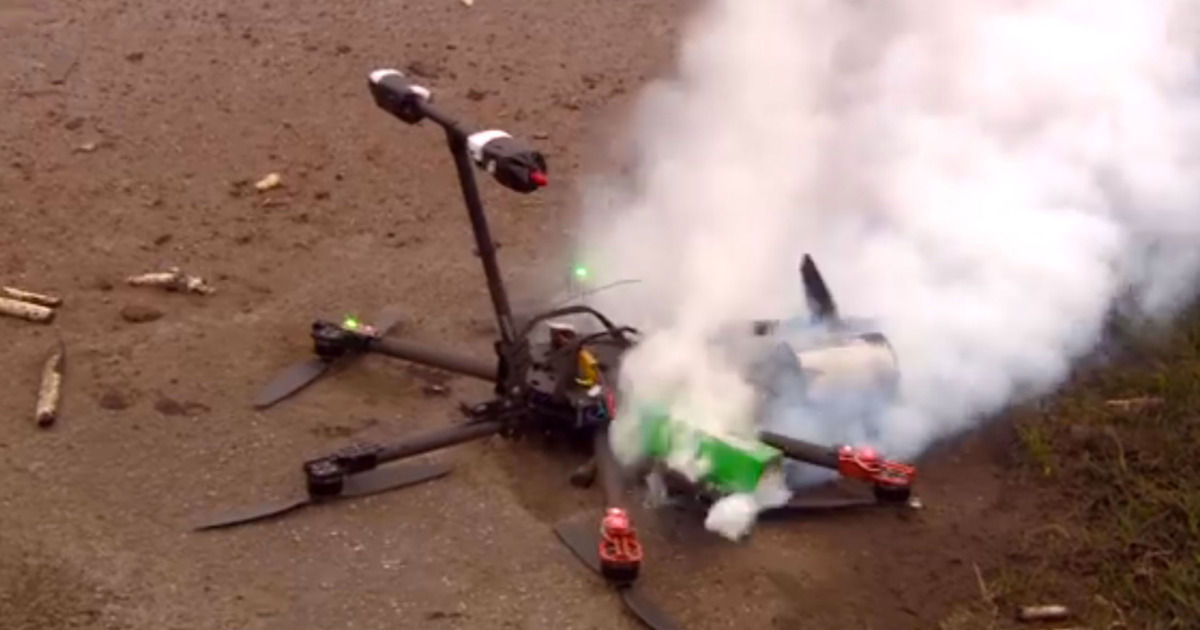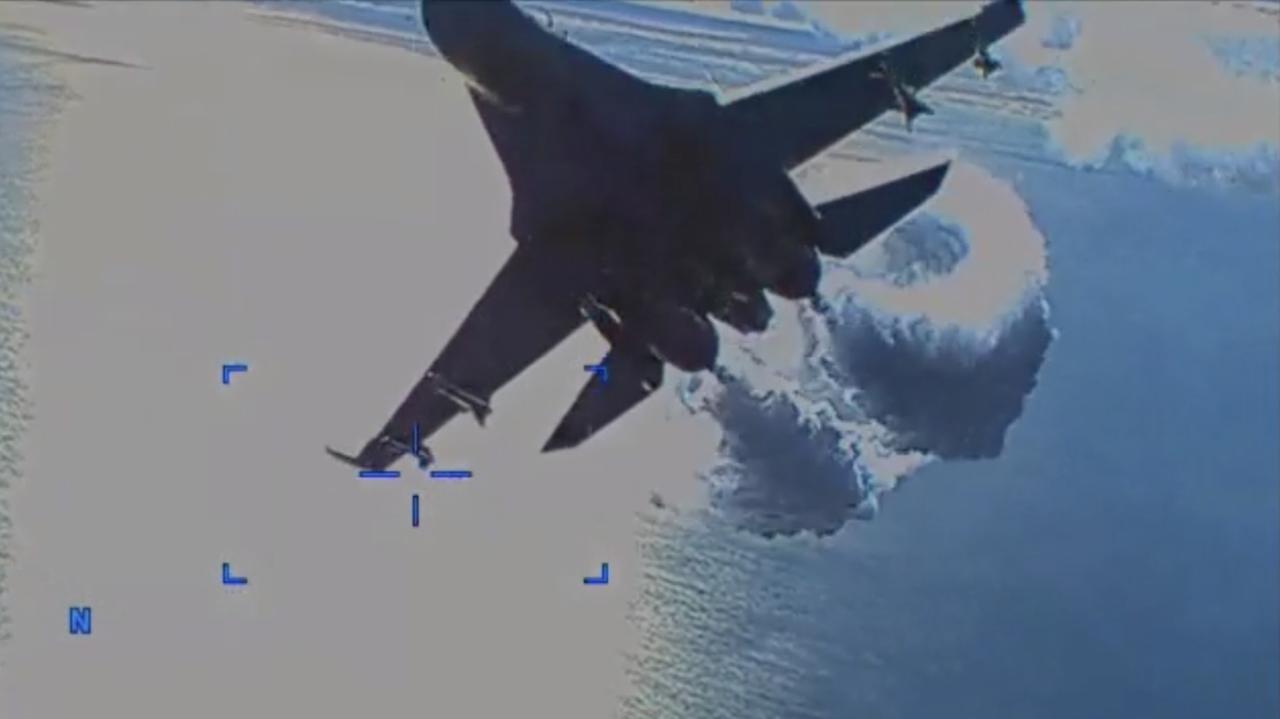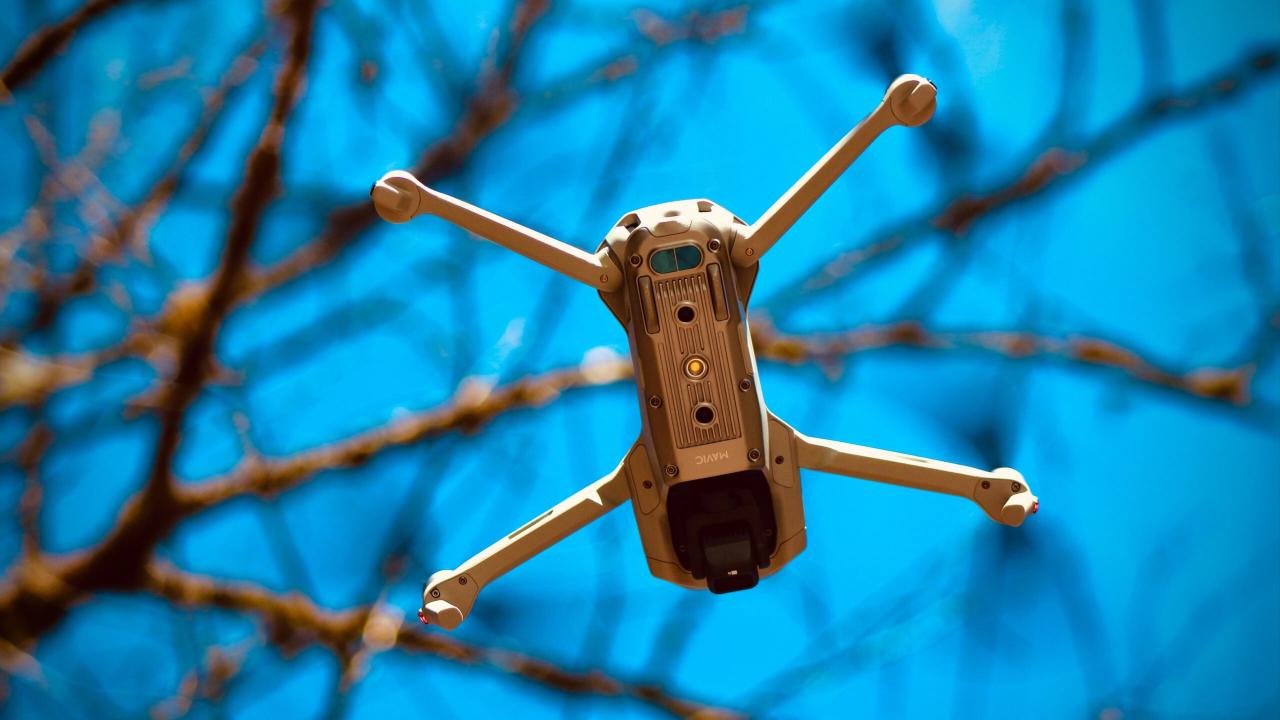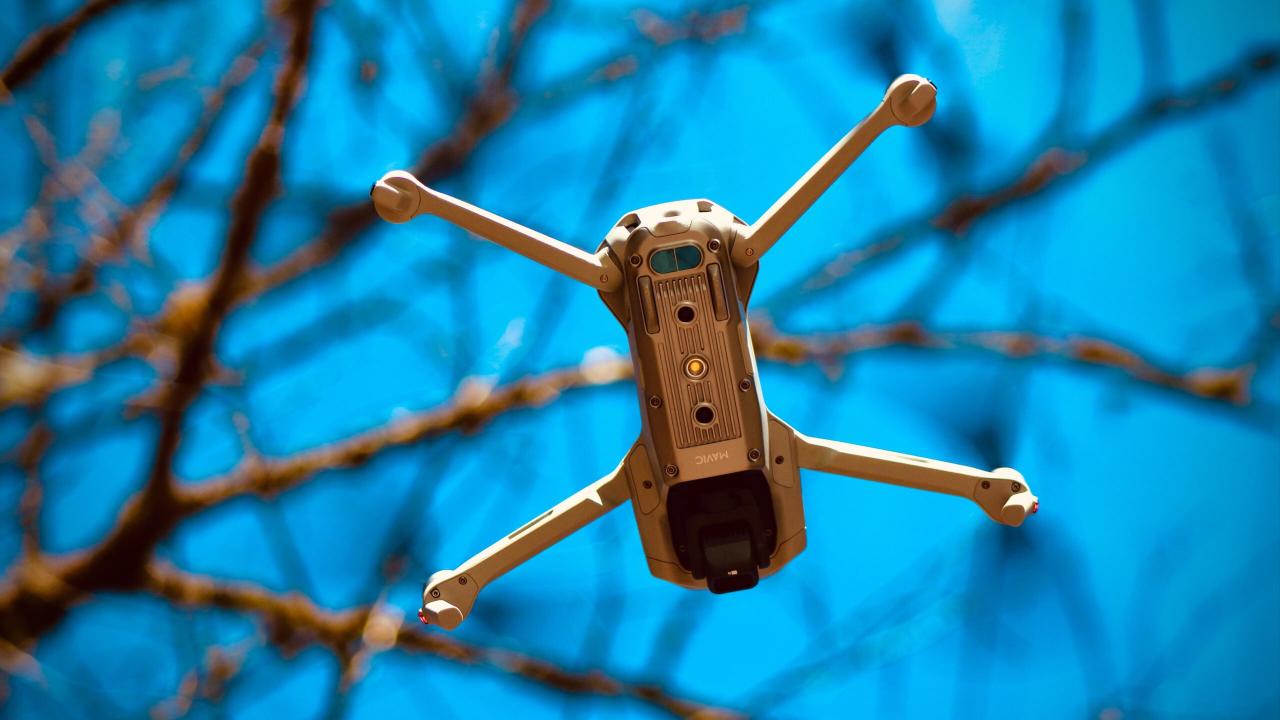Paris drone crash: This gripping account delves into the recent drone incident over Paris, examining the circumstances, potential causes, and resulting impact. We’ll explore technical malfunctions, human error, and regulatory aspects, alongside public reaction and proposed safety improvements. Get ready for a comprehensive look at this significant event.
From the initial reports to the ongoing investigations, we’ll dissect the timeline of events, analyze the drone’s specifications, and consider the broader implications for drone safety and regulations. We’ll also look at similar incidents globally and consider what can be done to prevent future occurrences.
Incident Details

The Paris drone crash, while not resulting in widespread damage or casualties, serves as a reminder of the potential risks associated with increasingly common drone technology. Understanding the specifics of this incident can inform future safety regulations and operational practices.The incident involved a relatively small, commercially available drone. Precise details regarding the specific model are often withheld pending official investigations, but information gleaned from various sources points to a common consumer-grade model.
This suggests that even seemingly innocuous drones can pose risks if mishandled or malfunctioning.
Drone Specifications and Circumstances
While the exact make and model remain officially unconfirmed, it’s highly likely the drone was a quadcopter design, meaning it was propelled by four rotors. These are common features in consumer drones, offering stability and maneuverability. It likely had a camera attached for recording video or still images, a typical function of many recreational drones. The circumstances surrounding the crash suggest a possible mechanical failure or operator error, though the official investigation will ultimately determine the cause.
The drone was reportedly operating in a relatively densely populated area, highlighting the importance of adhering to safety regulations regarding flight zones and airspace restrictions.
Timeline of Events
Information on the precise timeline is limited pending the full investigation. However, reports suggest the drone was in flight when it experienced an unexpected malfunction, possibly a motor failure or a loss of control signal. The crash occurred relatively quickly after the malfunction. Emergency services responded swiftly, and the area was briefly secured. The investigation process would involve recovering the drone wreckage, analyzing flight data (if available), and interviewing any witnesses.
Injuries and Damages
Fortunately, the Paris drone crash resulted in no reported injuries. Damage was also minimal, primarily limited to the drone itself and possibly minor property damage to the immediate vicinity of the impact site. The lack of significant injuries or widespread damage does not diminish the seriousness of the event; it highlights the potential for far more severe consequences if similar incidents occur in different circumstances.
Key Facts Summary
| Fact | Detail |
|---|---|
| Location | Paris, France (Specific location withheld pending investigation) |
| Drone Type | Likely a small, commercially available quadcopter drone |
| Injuries | None reported |
| Damage | Minimal; primarily to the drone itself |
Potential Causes
Determining the exact cause of the Paris drone crash requires a thorough investigation, encompassing technical analysis, pilot assessment, and meteorological data review. Several factors could have independently or collectively contributed to the incident. This section explores these possibilities.
Technical Malfunctions
Potential technical malfunctions could range from simple component failures to more complex software glitches. A malfunctioning motor, for example, could lead to loss of control, especially at higher altitudes. Battery issues, such as premature depletion or a short circuit, could also abruptly shut down the drone’s systems. Furthermore, GPS signal loss or interference, a common problem in urban environments with tall buildings, could disorient the drone and lead to erratic flight patterns.
Sensor failures, impacting the drone’s ability to accurately perceive its surroundings, are another potential contributing factor. Finally, a manufacturing defect in any of the drone’s components could have compromised its structural integrity or operational functionality.
Human Error
Pilot error remains a significant possibility. Inexperience in handling drones, especially in challenging urban environments, could have led to improper maneuvering or a failure to react appropriately to unexpected events. Negligence, such as ignoring pre-flight checks or operating the drone beyond its capabilities, also presents a potential cause. A lack of awareness of local airspace regulations, or a failure to adhere to them, could have placed the drone in a dangerous situation.
For instance, the pilot might have flown too close to other aircraft or buildings, exceeding safe operational limits.
Hey, so you heard about that Paris drone crash? It’s a pretty big deal, right? To get more info on incidents like this, check out this article on drone crash in Paris for a broader perspective. Understanding these events helps us learn about drone safety and regulations, ultimately leading to preventing future Paris drone crashes.
Environmental Conditions
Adverse weather conditions can significantly impact drone flight. Strong winds, for example, could overwhelm the drone’s control systems, making it difficult to maintain stability and trajectory. Heavy rain or fog could reduce visibility, hindering the pilot’s ability to monitor the drone’s position and orientation. Furthermore, extreme temperatures, either excessively hot or cold, could affect battery performance and the overall functionality of the drone’s electronic components.
For instance, a sudden gust of wind exceeding the drone’s operational limits, as documented in several similar incidents, could have easily caused the crash.
Comparison with Similar Incidents
Several drone crashes in densely populated urban areas have been attributed to similar causes. In a recent incident in New York City, a drone malfunction due to a faulty motor was cited as the primary cause. Another incident in London highlighted the risks of GPS interference in urban canyons, leading to a loss of control and subsequent crash.
These incidents underscore the importance of thorough pre-flight checks, pilot training, and careful consideration of environmental factors. The Paris incident, therefore, shares similarities with previous accidents, emphasizing the need for improved safety protocols and stricter regulations.
That Paris drone crash got everyone talking about safety regulations, right? It made me think about similar incidents, like the one at a major drone show; check out the details of this orlando drone show accident to see what went wrong there. Learning from these events is key to preventing future Paris-style drone mishaps and ensuring safer skies for everyone.
Potential Causal Pathways, Paris drone crash
A flowchart illustrating potential causal pathways would begin with a central node representing the “Drone Crash.” Branching from this node would be three main pathways: “Technical Malfunction,” “Human Error,” and “Environmental Conditions.” Each of these pathways would then further branch into more specific causes, such as “Motor Failure,” “Pilot Inexperience,” or “Strong Winds,” ultimately leading to the final outcome.
This visual representation helps to clarify the complex interplay of factors that can contribute to drone crashes. For example, a path could show: “Environmental Conditions” -> “Strong Winds” -> “Loss of Control” -> “Drone Crash”. Another might be: “Technical Malfunction” -> “Battery Failure” -> “Sudden Power Loss” -> “Drone Crash”.
Regulatory and Legal Aspects

The Paris drone crash highlights the crucial intersection of rapidly advancing technology and existing legal frameworks. Understanding the regulations governing drone operation in France, and how this incident might reshape them, is essential for ensuring safer skies and accountability.Existing Drone Regulations in Paris and FranceFrench drone regulations are relatively comprehensive, falling under the broader European Union regulations and national legislation.
These rules cover aspects such as drone registration, operator certification, flight restrictions in specific airspace (including near airports and populated areas), and operational limitations regarding weight, distance, and flight time. Specific regulations regarding flight authorization in Paris are particularly stringent due to the city’s high population density and numerous landmarks. Operators are generally required to maintain a safe distance from people and property, and to adhere to designated flight corridors when available.
Penalties for violating these regulations can range from fines to imprisonment, depending on the severity of the infraction.
Impact on Future Drone Regulations
The Paris drone crash is likely to spur a review and potential tightening of existing drone regulations. Similar incidents globally have led to increased scrutiny of drone technology and its potential risks. We might see stricter requirements for drone registration, more robust operator training and certification programs, and potentially more sophisticated airspace management systems to integrate drones safely into existing air traffic.
For example, the implementation of mandatory geofencing technology – which restricts drone flight within predefined areas – could become more commonplace, preventing unauthorized access to sensitive locations. Furthermore, increased use of remote identification technologies, allowing for the tracking and identification of drones in real-time, could become mandatory.
Legal Responsibilities of the Drone Operator
The drone operator bears primary legal responsibility for any damages or injuries caused by their drone. This responsibility extends to ensuring the drone is operated safely and in compliance with all applicable regulations. This includes pre-flight checks, adherence to flight restrictions, and maintaining awareness of the drone’s surroundings at all times. Negligence on the part of the operator, such as failing to properly maintain the drone or disregarding safety protocols, could lead to significant legal consequences, including civil lawsuits for damages and potential criminal charges depending on the severity of the incident.
The operator’s insurance coverage also plays a significant role in determining liability.
Ongoing Investigations and Legal Proceedings
Information regarding specific ongoing investigations or legal proceedings related to the Paris drone crash would need to be sourced from official news reports and statements from relevant authorities. Such investigations typically involve examining the drone’s flight data recorder (if equipped), interviewing witnesses, and analyzing the drone’s mechanical condition to determine the cause of the crash and assign responsibility. The findings of these investigations would significantly influence any subsequent legal actions.
Depending on the outcome, legal proceedings could involve civil lawsuits against the drone operator or manufacturer, or even criminal charges if negligence or willful misconduct is established.
Key Legal and Regulatory Considerations
The following points summarize key legal and regulatory considerations surrounding drone operation, particularly in light of the Paris incident:
- Drone Registration: Mandatory registration of drones with relevant authorities.
- Operator Certification: Proof of competency and adherence to safety standards.
- Airspace Restrictions: Compliance with designated no-fly zones and flight restrictions.
- Liability Insurance: Adequate insurance coverage to address potential damages or injuries.
- Data Privacy: Compliance with regulations regarding data collection and usage by drones.
- Maintenance and Safety Checks: Regular maintenance and pre-flight checks to ensure safe operation.
- Emergency Procedures: Establishment and adherence to emergency protocols in case of malfunctions.
Public Reaction and Media Coverage
The Paris drone crash sparked a wide range of public reactions, from concern and fear to fascination and debate. The incident quickly became a major news story, generating extensive media coverage across various platforms, shaping public perception of drone safety and regulations.The initial response was largely one of shock and disbelief. Videos and images of the crash circulated rapidly online, fueling public discussion and speculation about the cause.
Many expressed concern for the potential harm to people and property, highlighting the inherent risks associated with even relatively small drones operating in densely populated areas. This initial shock gave way to a more nuanced discussion, with some focusing on the need for stricter regulations and others emphasizing the overall safety record of drones and the potential benefits of this technology.
Public Sentiment Analysis
Public sentiment, as reflected in online discussions and news comments, exhibited a clear trend. Initially, fear and anger dominated, driven by the visual impact of the crash and the uncertainty surrounding the cause. As investigations progressed and more information became available, a more balanced perspective emerged. While concern about safety remained, a segment of the public emphasized the importance of responsible drone operation and the need for education rather than outright bans.
This shift in sentiment is reflected in the change in tone of social media posts and online news comments, moving from immediate outrage to more measured discussions about safety protocols and regulatory frameworks.
Media Coverage Analysis
Media coverage of the Paris drone crash varied significantly depending on the outlet and its perspective. Major news organizations provided factual reports, incorporating information from official investigations and expert opinions. However, some smaller news outlets or social media accounts presented more sensationalized accounts, focusing on the dramatic aspects of the event and potentially exaggerating the risks involved. Some media outlets highlighted the lack of clear regulations surrounding drone usage in urban environments, while others focused on the technological advancements in drone technology and their potential positive impacts.
This diverse media landscape contributed to a complex and multifaceted public discourse.
Examples of Social Media Reactions
Social media platforms, such as Twitter and Facebook, became central hubs for immediate reactions to the crash. Early posts predominantly expressed shock and concern, with many users sharing videos and images of the incident. Some users voiced anger and frustration towards the drone operator, demanding accountability and stricter penalties. Other users engaged in discussions about drone safety, regulations, and the potential for future incidents.
Hashtags related to the crash quickly trended, allowing users to follow the unfolding events and contribute to the online conversation. For example, a common hashtag might have been #ParisDroneCrash, facilitating rapid dissemination of information and opinions. The conversation evolved over time, reflecting the changing public sentiment from initial fear to more informed discussions about policy and technology.
Public Opinion on Drone Safety
The Paris drone crash significantly shaped public opinion on drone safety. The event served as a stark reminder of the potential dangers associated with drone operation, particularly in densely populated areas. This led to increased calls for stricter regulations, improved safety protocols, and enhanced public education initiatives. However, the incident also prompted discussions about the broader benefits of drone technology and the need to balance safety concerns with the potential for innovation and economic growth.
The long-term impact on public opinion remains to be seen, but the crash undoubtedly raised awareness of the need for a robust regulatory framework and responsible drone operation.
Media Coverage Trends
A hypothetical graph depicting media coverage trends would show a sharp spike immediately following the crash, with a high volume of news reports and social media posts. This initial peak would gradually decline over time, although coverage would likely remain elevated for several weeks or months as investigations continued and regulatory discussions progressed. The graph would illustrate the initial intense interest in the event, followed by a more sustained but less intense level of media attention as the story evolved.
The shape of the graph might resemble a sharp mountain peak that gradually descends into a plateau.
Safety and Prevention Measures

The Paris drone crash highlights the urgent need for comprehensive safety measures to prevent similar incidents. Improving drone safety requires a multi-faceted approach encompassing technological advancements, rigorous pilot training, effective airspace management, and robust regulatory frameworks. This section details key strategies for enhancing drone safety and preventing future accidents.
Hey, so you heard about that Paris drone crash? It’s a pretty big deal, right? To get the full lowdown on similar incidents, check out this article on a drone crash in Paris which highlights some of the safety concerns involved. Understanding these incidents helps us learn how to prevent future Paris drone crashes and improve drone safety overall.
Improved Drone Technology
Technological advancements play a crucial role in enhancing drone safety. Features like advanced obstacle avoidance systems, using sensors like lidar and radar, are vital. These systems allow drones to autonomously detect and avoid obstacles, minimizing the risk of collisions. Furthermore, improved GPS accuracy and fail-safe mechanisms, such as automatic landing capabilities in case of signal loss or malfunction, are critical for preventing accidents.
Real-time data transmission and remote emergency shutdown capabilities are also essential safety features. For example, a system that automatically cuts power if the drone loses contact with the controller could have prevented many accidents.
Pilot Training and Certification
Rigorous pilot training and certification programs are paramount. These programs should cover not only the technical aspects of drone operation but also risk assessment, emergency procedures, and relevant regulations. A tiered certification system, based on drone size, operational complexity, and intended use, could ensure pilots possess the necessary skills and knowledge for safe operation. Regular refresher courses and advanced training modules should be mandatory to maintain proficiency and adapt to evolving technologies.
The current FAA Part 107 certification in the US, for example, serves as a model, although continuous improvement is necessary.
Airspace Management and Drone Registration
Effective airspace management is crucial for preventing mid-air collisions and ensuring safe drone operation near airports and other sensitive areas. This involves establishing designated drone flight zones, implementing real-time airspace monitoring systems, and using technologies like ADS-B (Automatic Dependent Surveillance-Broadcast) to track drone movements. Comprehensive drone registration systems are also necessary to identify drone operators and hold them accountable for their actions.
A robust registration system allows for better tracking of drones, enabling quicker identification of operators involved in accidents or violations. The European Union’s drone registration system, for instance, provides a model for such a system.
Recommendations for Improving Drone Safety
The following recommendations are crucial for improving drone safety:
- Mandate advanced obstacle avoidance systems on all commercial and heavier drones.
- Implement a tiered drone pilot certification system based on drone class and operational complexity.
- Establish a nationwide, real-time drone tracking and monitoring system integrated with air traffic control.
- Develop and enforce strict regulations regarding drone operation near airports and other critical infrastructure.
- Promote public awareness campaigns to educate the public about safe drone operation and responsible use.
- Invest in research and development of drone technologies focused on enhanced safety and autonomous flight capabilities.
- Strengthen international cooperation on drone regulations and safety standards to harmonize best practices globally.
Closing Summary
The Paris drone crash serves as a stark reminder of the potential dangers associated with drone technology, even in regulated airspace. Understanding the contributing factors—from technical issues to human error and environmental conditions—is crucial for implementing effective safety measures and preventing similar accidents. Moving forward, a collaborative approach involving technological advancements, stricter regulations, and enhanced pilot training will be essential to ensuring the responsible and safe integration of drones into our skies.
Question & Answer Hub: Paris Drone Crash
What type of drone was involved?
The specific make and model will be detailed in the full report, but information available so far points to a commercially available drone.
Were there any arrests made?
This depends on the outcome of the ongoing investigation. The full report will detail any legal actions taken.
What was the estimated cost of damages?
A precise figure isn’t yet available, but the report will cover the extent of the damage and the cost of repairs or replacements.
How common are drone crashes in Paris?
The frequency of drone crashes in Paris will be compared to other locations and discussed in the context of overall drone usage and safety measures.
